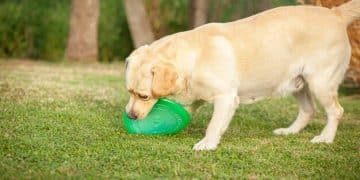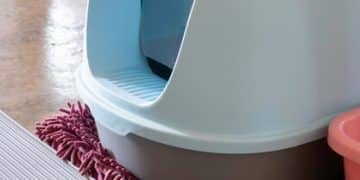The Scoop on Poop Bags: Eco-Friendly & Biodegradable Options in 2025
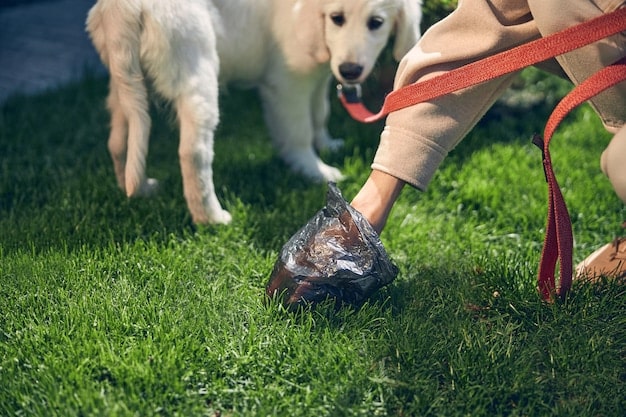
Anúncios
Navigating the world of eco-friendly pet waste disposal, this guide reviews the best biodegradable and compostable poop bags available in 2025, helping you make sustainable choices for your furry friend and the environment.
Picking up after your dog is a necessary part of pet ownership, but are you doing it sustainably? In 2025, the market is flooded with options, but this article, ‘The Scoop on Poop Bags: A Review of Eco-Friendly and Biodegradable Options in 2025‘, will help you choose the best for your pet and the planet.
Anúncios
Why Choose Eco-Friendly Poop Bags?
As pet owners, we’re responsible for more than just feeding and walking our dogs. We also contribute to waste management. Traditional plastic poop bags can take hundreds of years to decompose, filling landfills and polluting our environment. Switching to an eco-friendly alternative is a simple yet impactful way to reduce your carbon footprint.
The Environmental Impact of Plastic Poop Bags
Traditional plastic bags are a significant source of pollution. Made from petroleum, they require fossil fuels to produce and often end up in landfills where they break down into microplastics.
Anúncios
Benefits of Biodegradable Bags
Biodegradable poop bags offer a sustainable alternative. They are designed to break down naturally over a shorter period, reducing environmental impact. Choosing biodegradable options can help decrease plastic waste and promote a healthier planet.
- Reduces reliance on fossil fuels for production.
- Minimizes landfill waste and pollution.
- Supports a more sustainable lifestyle for pet owners.
- Decreases the risk of microplastic contamination in soil and water.
Ultimately, opting for eco-friendly poop bags is a responsible choice. By selecting biodegradable and compostable options, you’re contributing to a cleaner, greener future for generations to come.
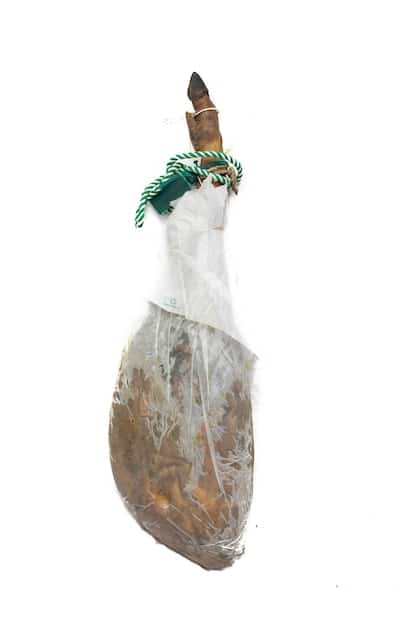
Understanding Biodegradable vs. Compostable
While the terms are often used interchangeably, understanding the difference between biodegradable and compostable poop bags is crucial. Both are better than traditional plastic, but they break down in different ways and under different conditions.
Biodegradable Poop Bags
Biodegradable bags are designed to decompose naturally when exposed to bacteria, sunlight, and air. However, the timeframe for this process can vary greatly.
Compostable Poop Bags
Compostable bags, on the other hand, break down into nutrient-rich soil in a compost environment. They require specific conditions, such as high temperatures and humidity, to decompose properly.
- Biodegradable bags can take longer to decompose than compostable bags.
- Compostable bags require specific composting conditions to break down.
- Both options reduce the environmental impact compared to traditional plastic.
- Look for certifications like ASTM D6400 to ensure compostability standards are met.
In short, compostable bags are the superior option for environmentally conscious consumers, provided they have access to proper composting facilities. However, both types offer a significant improvement over standard plastic poop bags. Now, let’s delve into the top eco-friendly and biodegradable options available in 2025.
Top Eco-Friendly Poop Bags in 2025: Our Review
In 2025, several brands stand out for their commitment to sustainability and quality. We’ve tested and reviewed some of the top eco-friendly poop bags on the market to help you make an informed decision.
Bag to Nature Compostable Poop Bags
These bags are made from cornstarch and other plant-based materials, making them fully compostable. They are thick, durable, and leak-proof, ensuring a mess-free cleanup. One potential issue may be the price point, as compostable materials tend to be slightly more expensive.
Earth Rated Poop Bags
Earth Rated offers a range of eco-friendly options, including biodegradable and compostable bags. Their bags are known for their lavender scent, which helps mask unpleasant odors. Some users have noted that the bags can sometimes be difficult to tear off the roll.
- Bag to Nature: Fully compostable, thick, and durable.
- Earth Rated: Offers biodegradable and compostable options with a pleasant scent.
- Pooch Paper: A paper-based, recyclable alternative to plastic bags.
- BioBag: Certified compostable and made from renewable resources.
We carefully considered factors such as compostability, durability, leak-resistance, ease of use, and overall value when compiling this review. Now let’s move on to discuss the key features to look for when selecting the perfect eco-friendly bag.
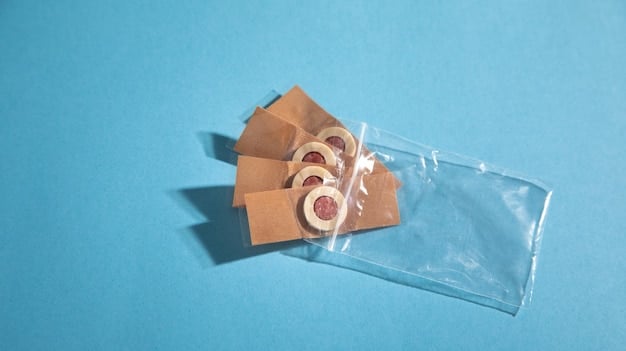
Key Features to Look for in Eco-Friendly Poop Bags
Choosing the right eco-friendly poop bags involves more than just finding one labeled “biodegradable” or “compostable.” Several key features can help you identify high-quality and truly sustainable options.
Certifications
Look for certifications such as ASTM D6400, EN13432, or BPI. These certifications ensure that the bags meet specific standards for compostability and biodegradability.
Material Composition
Check the material composition of the bags. Opt for bags made from plant-based materials like cornstarch, vegetable oils, or recycled paper. Avoid bags that contain polyethylene or other non-biodegradable plastics.
Durability and Leak-Resistance
Ensure the bags are thick and durable enough to handle the task at hand. Look for bags with reinforced seams and leak-resistant construction to prevent messy accidents. A good eco-friendy bag should meet certain standards you can check for before purchasing.
- Certifications guarantee compostability and biodegradability standards.
- Material composition should be plant-based or recycled.
- Durability and leak-resistance are essential for mess-free cleanup.
- Consider the thickness and size of the bags based on your dog’s breed.
Next, we will explore composting dog waste: can it be done safely and responsibly?
Composting Dog Waste: Is It Possible?
Composting dog waste can be a sustainable option, but it’s essential to do it correctly. Dog waste contains pathogens that can be harmful to humans, so it’s important to follow specific guidelines to ensure safe composting.
Setting Up a Dog Waste Composting System
Create a separate compost bin specifically for dog waste. This bin should be located away from vegetable gardens and other areas where food is grown.
The Composting Process
Mix the dog waste with carbon-rich materials like leaves, straw, or sawdust. Maintain a proper moisture balance and turn the pile regularly to promote decomposition. When done properly, harmful pathagens and pollutants are eliminated.
Safety Precautions
Always wear gloves when handling dog waste and compost. Wash your hands thoroughly afterward. Do not use the compost on edible plants.
- Set up a separate compost bin away from food-growing areas.
- Mix dog waste with carbon-rich materials like leaves or sawdust.
- Maintain a proper moisture balance and turn the pile regularly.
- Always wear gloves and wash your hands thoroughly.
Composting is not suitable for everyone, but it’s a viable option for those committed to responsible waste management. So, what about poop bag disposal if composting isn’t an option for you? Now we will cover other disposal methods.
Other Disposal Methods for Poop Bags
Even with eco-friendly poop bags, proper disposal is crucial. If composting isn’t an option, here are some alternative methods to consider.
Waste Disposal Options
Make sure to dispose of the bags responsibly, either in your trash can or in designated waste receptacles along your walking route. Always follow local regulations.
Flushing Poop
Some cities allow flushing dog waste, but it’s essential to check local guidelines first. Flushing can overload sewage systems and contaminate waterways if not done correctly. It is important to emphasize that the poop bag itself should never be flushed, only the waste.
Finding Public Waste Receptacles
Carry your poop bag with you until you find a designated waste receptacle. Never leave bags on the ground, hanging from trees, or on people’s property.
- Dispose of bags responsibly in trash cans or designated receptacles.
- Check local guidelines before flushing dog waste.
- Carry bags until you find a proper disposal location.
- Encourage pet owners to be considerate and respectful of public spaces.
In conclusion, exploring different waste disposal options ensures dog owners can manage the waste effectively, responsibly and sustainably . Next, we will discuss the future of eco-friendly poop bags and what innovations we can expect to see.
The Future of Eco-Friendly Poop Bags
As awareness of environmental issues grows, innovations in eco-friendly poop bags are constantly emerging. Here’s a glimpse into what the future may hold.
New Materials
Researchers are exploring new materials for poop bags and other waste disposal practices, such as mushroom packaging (otherwise known as mycelium) that are even more sustainable than current options.
Smart Technology
In the future, smart technology and new advancements may be incorporated into poop bags to provide information on the dog’s possible health issues or irregularities.
Community Initiatives
More communities are implementing initiatives to encourage responsible pet waste management, such as providing public composting stations and educational programs.
- New materials will be more sustainable and decompose faster.
- Smart technology may provide real-time health insights.
- Community initiatives will promote responsible pet waste management.
- Increased consumer awareness drives demand for eco-friendly options.
As advancements in technology and material sciences continue, the future of eco-friendly pet waste management looks promising. The demand is increasing, so brands are responding with new options. Now that all aspects of eco-friendly dog waste management have been addressed, let’s review some key points.
| Key Point | Brief Description |
|---|---|
| 🌿 Eco-Friendly Choice | Reduces environmental impact compared to plastic bags. |
| ✅ Certifications | Ensures bags meet compostability and biodegradability standards. |
| 🐶 Safe Composting | Requires specific setup and precautions to prevent health risks. |
| 💡 Future Innovations | Emerging materials and technologies offer even more sustainable solutions. |
Frequently Asked Questions
▼
Yes, they break down faster than traditional plastic bags, reducing landfill waste and the risk of microplastic pollution, although the exact timeframe can vary depending on environmental conditions.
▼
Look for certifications like ASTM D6400 or EN13432 to ensure they meet recognized standards for compostability, which means they’ll break down properly in a composting environment.
▼
It’s not recommended to use dog waste compost on edible plants due to potential pathogens. A separate, dedicated compost system is required where the use remains only ornamental.
▼
Common materials include cornstarch, plant-based polymers, and recycled paper, which are chosen for their ability to break down more readily than traditional plastics in a compost environment.
▼
Yes, flushing dog waste is an option in some cities. You can also use paper-based compostable options. Make sure to check local guidelines and use designated public waste receptacles.
Conclusion
Choosing eco-friendly poop bags is a small but significant step towards a more sustainable lifestyle. By understanding the differences between biodegradable and compostable options, and by considering the key features outlined in this review, you can make an informed decision that benefits both your pet and the planet.

